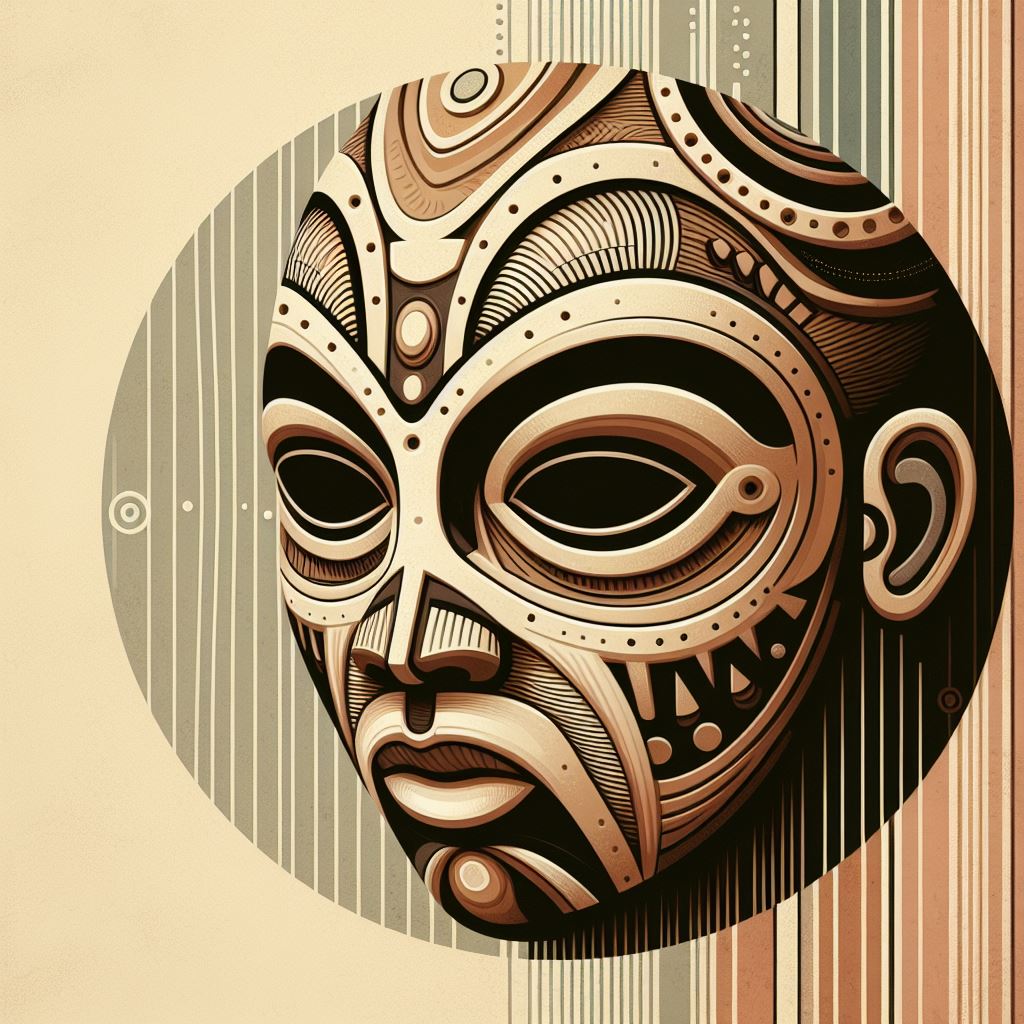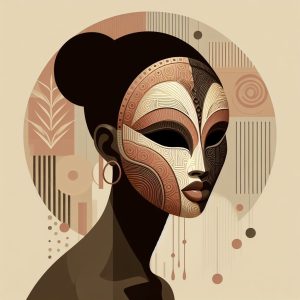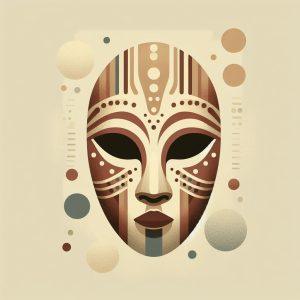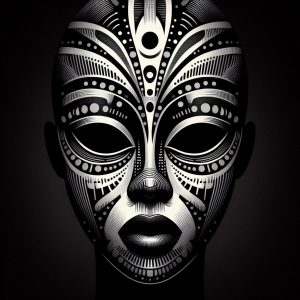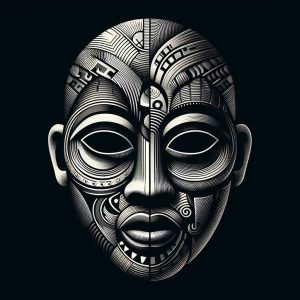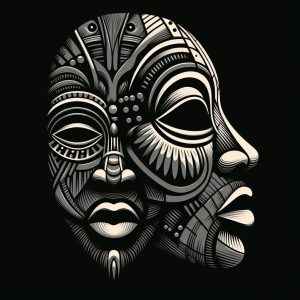African Masks Influence on Modern Art and Societies Globally
African Masks traditions are traced deeply within indigenous African cultures for thousands of years. More than art, ceremonial masks hold sacred significance connecting people to ancestors and core values of communities across the continent.
This extensive guide examines the lineage, symbolism, use in spiritual rituals, diversity of artistic styles, and modern relevance that make African masks profoundly important cultural artifacts to this day.
Ancient Origins and Spiritual Purpose
The earliest discovered wooden masks date to the 7th century BC African archaeological sites. But evidence suggests face-covering rituals vastly predate the sculpted masks themselves, with records of ceremonies involving body paint designs back over 10,000 years ago. As tribes developed into complex social systems, masks became integrated into origin stories, burial rituals, and village events.
The mask form holds a symbolic duality in the African imagination. Carvings absorb and communicate desired virtues and mystical guardianship. Dancers wearing masks transition into spiritual conduits, manifesting supernatural powers to benefit communities. This reflects core indigenous beliefs of an ancestral impact on humans linked through the ephemeral mask avatar.
Used in milestones from plentiful harvest ceremonies to marriages and funerals, masks took a profound place in cultural identity and faith for ethnic groups across Western, Central, and Southern regions of Africa.
Societal Role and Tribal Use
Masking traditions cement their societal impact by representing ancestors and spirits dancing among villages during pivotal events. The consistent masked presence across these celebrations, rituals, and secret society rites of passage fused their influence into the very fabric of community life.
Tribes believe surrendering masking risks severing ties between living and dead, incurring the wrath of spirits not venerated properly. Each region’s distinct mask carving styles also anchor creative expression to heritage pride. So ethnic groups integrate masks extensively into theater, education, storytelling, and museums to share this still thriving folk life.
The Dazzling Diversity of African Mask Styles
Despite shared spiritual symbolism and function, African masks exemplify striking diversity in materials, patterns, composition, and construction techniques between the over 3000 ethnic groups across nations and regions.
Distinct Regional Stylistic Motifs
Scholars categorize African masks into broad geographic design groups with shared common attributes:
West African
– Heavy abstracted facial planes and misshapen heads often represent ideals of feminine beauty and motherhood.
– Common in masks of Yoruba (Nigeria), Mende (Sierra Leone), and Dogon (Mali) peoples.
Central African
– Emphasize geometric patterning, symmetrical lines, and rectangles depicting reciprocal social arrangements with others and harmony in one’s environment.
– Styles distinct to cultural groups like the Chokwe, Pende, and Kuba clusters.
Southern African
– Dense eclectic compositions painted vibrantly, built up with actual attached materials mimicking spiritual energy and transformational power.
– Styles among the Zulu, Makonde, and Shona tribes known for elaborate regalia masks.
Materials and Design Techniques
Mask makers hand carve local woods like kapok, mahogany, ebony, and Spanish cedar into expressive facial forms. Surface detailing incorporates masterful geometric engraving, vibrant plant pigment paints, and decorative attachments with beads, foliage, horns, and woven grasses that complete the regalia. Leather straps allow supportive wearability for ritual dances. These local material patterns contribute toward distinct regional stylistic motifs.
Common Tribal Mask Attributes
Certain tribal mask aesthetics identify unique cultural markers:
– West African: heavy abstract planes, bulging eyes, and jaws depicting femininity
– Central African: angular geometries and parallel lines metaphors for social harmony
– Southern African: eclectic compositions with beads/feathers mimicking spiritual potency
Mask subjects also widely reference moral myths on origin legends, deities, ancestors, animals, wisdom myths, and the underworld. Through their carvings and ceremonial symbolism, these genres remind observers of shared principles for ethical living.
Secret Society Practice
Many groups encase tribal masking rituals in secret societies, believing initiation awakens metaphysical understanding. For instance, West African Poro and Sande groups use carved masks to instruct young women and men on societal responsibilities through song, dance, and plays. Only society members ever view certain masks used as representing protective spirits or dangerous forces to be overcome for advancement into elder roles.
Modern Relevance of Tribal Mask Heritage
Despite widespread conversion to external religions in Africa, mask lore persists through useful integration into contemporary contexts rather than elimination.
Cultural Anchor
Tribes pivot rituals, oral histories, and community ethics around mask symbolism as an ancestral bridge. The distinct visual styles distinguish regional artistry while unifying dispersed members. Timber, grasses, and pigments are used to connect people to the native lands they still occupy. And the spirit-channeling dance allows guidance from past generations to inform present choices.
Artistic Inspiration
Abstract mask aesthetic and mythic motifs inspired Cubist, Surrealist, and African-American art movements from the 20th century to today. Interior designers, event planners, and visual creators infuse this cultural signature into photos, decor, and clothing.
Tourism Trade
Masking draws tourist money into remote villages to witness traditional dances alive with colorful regalia, pulsating drum beats, and embodied ancestral histories. Locals gain income performing in cultural centers or as artisans selling masks to visitors wanting to bring an authentic artifact home.
In these ways, African masks will continue sparking inspiration and preserving heritage far into the future as prestigious tribal treasures.
FAQs
- What materials are traditionally used to create African masks?
- Woods like mahogany, ebony, and kapok. Also beads, raffia, animal horns and skins, feathers, and plants.
- What African cultures most prize mask artistry?
- Groups like the Yoruba, Dogon, Kuba, Dan, Makonde, and Zulu are renowned for masks.
- How are masks significant in tribes beyond art pieces?
- Masks hold sacred roles in rituals, oral histories, societal organization, and connections to ancestors and spirits.
- What distinctly do female masks depict?
- Matriarchal ideals, motherhood, feminine beauty, fertility, and reproductive power.
- How do masks inform on Africa’s history?
- Styles and icons trace cultural evolutions and exchanges across tribes mediated through art and ceremony.
References
- African mask. (2023, February 22). In Wikipedia. https://en.m.wikipedia.org/wiki/African_mask
- Ezra, Kate. (1992). Royal Art of Cameroon. The Metropolitan Museum of Art. https://archive.metmuseum.org/courtauld/forge/resources_bibliography_PDFs/Ezra_1992d.pdf
- Thompson, R.F. (1974). African Art in Motion: Icon and Act. University of California Press.
